

Shane O'Donoghue
2025 Nissan Ariya Nismo review: Quick drive
6 Days Ago
The last examples of the V8-powered LandCruiser 70 Series will reach customers at the end of 2025, while a manual four-cylinder enters production this October.

News Editor


News Editor
Toyota Australia has axed the V8-powered LandCruiser 70 Series and is working to secure as many examples as possible between now and the end of next year.
It’s calling time on the 4.5-litre turbo-diesel V8 engine after 17 years on sale locally due to “changing regulations and community expectations”, and is instead expanding the four-cylinder lineup with the addition of a manual transmission.
Production of V8-powered 70 Series models will end in September 2024, except for 79 Series GXL single- and double-cab utes.
Final deliveries of V8-powered wagons, Troop Carriers, and Workmate and GX utes will reach customers by the end of the year, Toyota says.
Production of GXL utes will continue “well into next year”, with customer deliveries to be completed during the fourth quarter of 2025.
Orders of V8-powered models had been paused for almost two years. Toyota says the oldest orders will be filled first.

“Out of respect for those customers who have already placed orders, and many of them have been waiting a long, long time, our single-minded focus is to get the maximum possible V8 allocation from the factory and deliver them to customers as quickly as possible,” said Sean Hanley, Toyota Australia’s vice president for sales, marketing and franchise operations.
He said the company’s goal is to fill the “significant” number of orders.
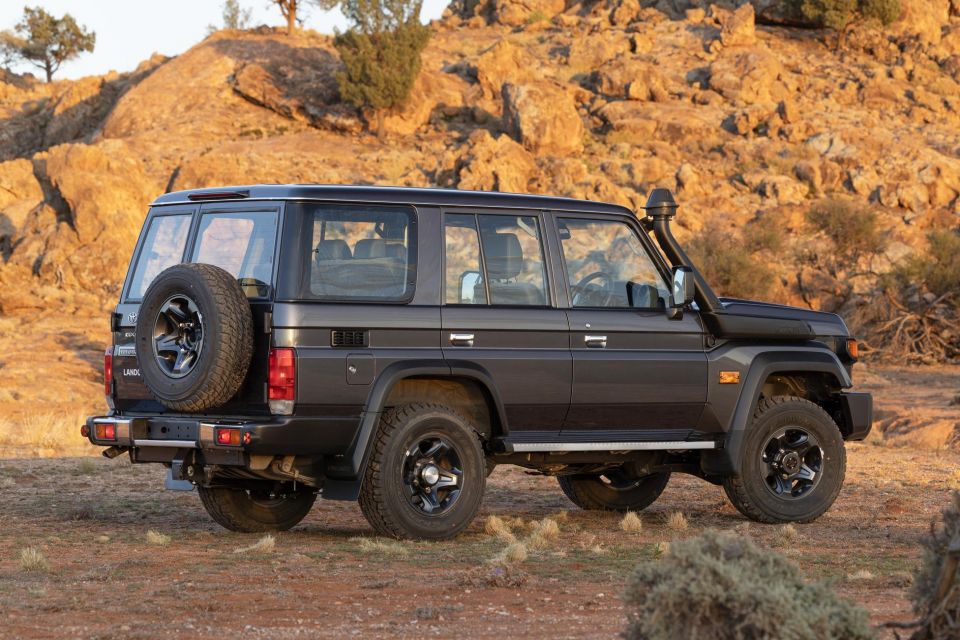
“Our dealers are working with customers to secure their preferred Toyota vehicle,” said Mr Hanley.
“Some of them are moving to four-cylinder. Now that we’ve got a four-cylinder manual coming, that may be advantageous for some of them, but if they wish to stick to V8, that’s fine. We’ll work through and try to fulfil those orders.”
In addition to axing the 1VD-FTV engine in our market, it has simultaneously announced the 1GD 2.8-litre turbo-diesel four-cylinder launched last year will gain a five-speed manual option.
The manual four-cylinder 70 Series will enter production in October, with pricing and fuel economy figures to be announced closer to launch.
Toyota has confirmed manual four-cylinder 70 Series models will produce the same 150kW as auto models, but with 450Nm of torque – down from 500Nm.
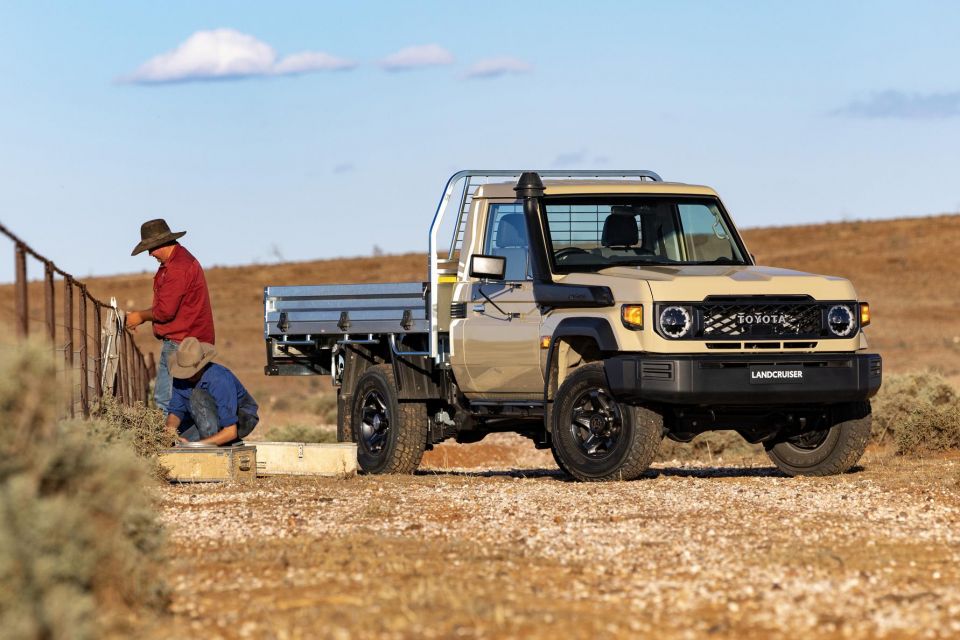
The manual will be offered on all models bar single-cab utes and the Workmate wagon, and is based on the manual used in the V8 but engineered for higher-torque applications.
It has unique gear ratios, with shorter first, second and third gears for better performance off the line, and has a flywheel compatible with a 12-inch clutch plus a dust seal to prevent foreign matter entering the release bearing.
Toyota has also added a triple synchronisation mechanism to the first gear for smoother changes, while a longer fifth gear is intended to improve fuel economy and reduce noise at highway speeds.
However, it won’t be offered with Downhill Assist Control like the four-cylinder auto, and also misses out on the front console box.
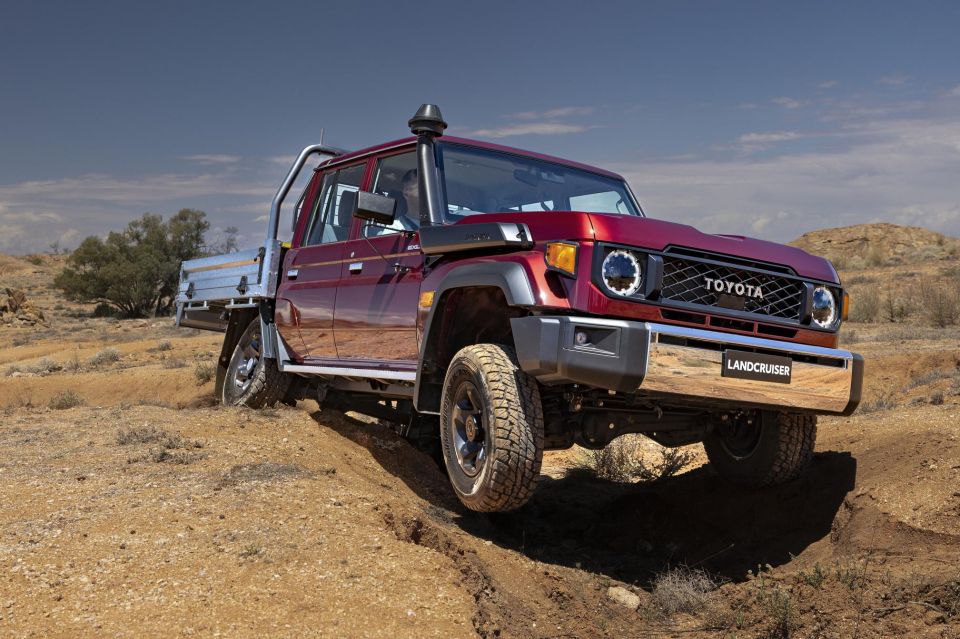
Mr Hanley said the V8’s axing has been in the works for a while.
“It’s not very difficult to work out why we’re bringing down the curtain on the V8. Changing regulations and, more importantly, community expectations made it inevitable. It was only a matter of time. And that time is now,” he said.
“The other alternative here of course was to walk away from this model, but let me assure all of you, that was never an option.
“And before you jump to conclusions that this was completely driven by NVES regulation, yes, regulation played a part.
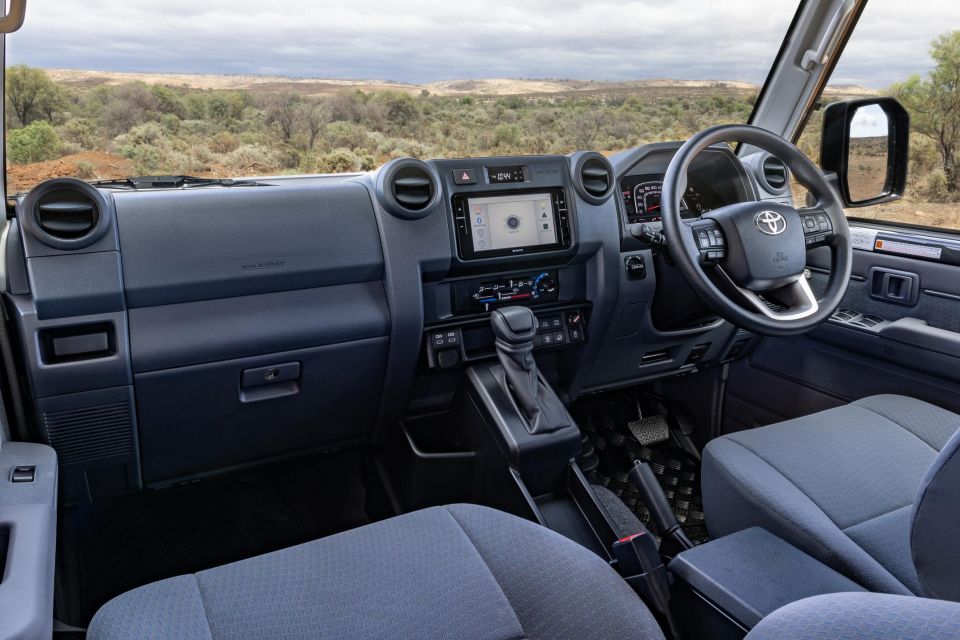
“I wish I could tell you we were so agile that we could move so quickly from March of this year, but the hardcore reality is we’ve been planning this for a long long time, so regulation, but more importantly consumer sentiment has played the biggest role.”
In announcing the axing of the engine for our market, Mr Hanley called it a “joint decision” between Toyota Australia and head office in Japan.
Since its launch last year, Mr Hanley says there has been a “healthy” take-up of four-cylinder 70 Series models, particularly in fleets.
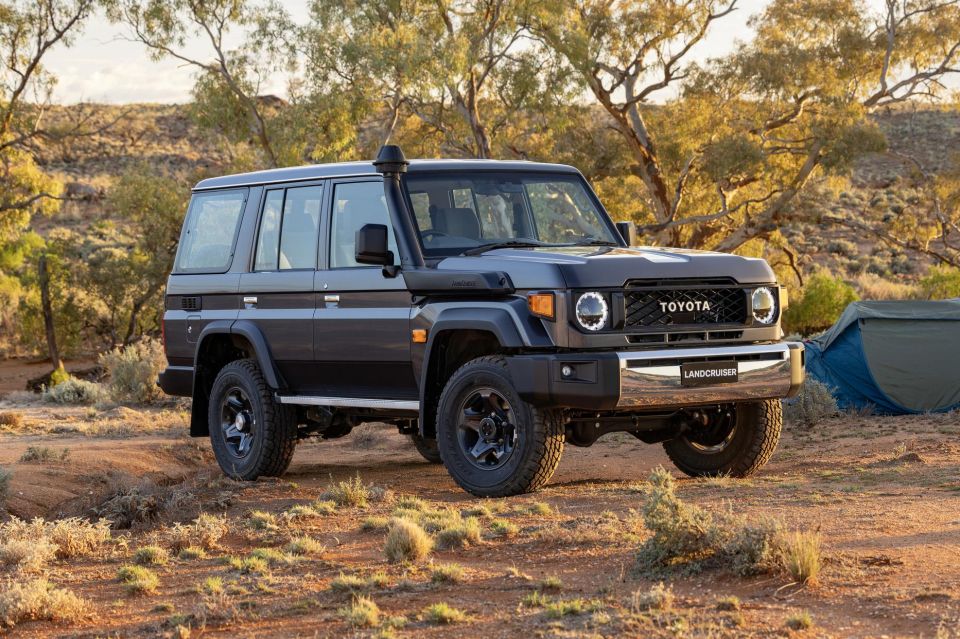
He cited the fitment of an automatic transmission as being a major driver of these sales, with the V8 being exclusively offered with a five-speed manual.
There’s currently a 3-6 month wait on four-cylinder models.
While the four-cylinder manual may attract would-be V8 buyers, Mr Hanley said he expects the auto to be the bigger seller moving forward.
“The market’s moving to auto, however this will be a really good test to see how far and what contribution of sales the manual actually makes,” he said.
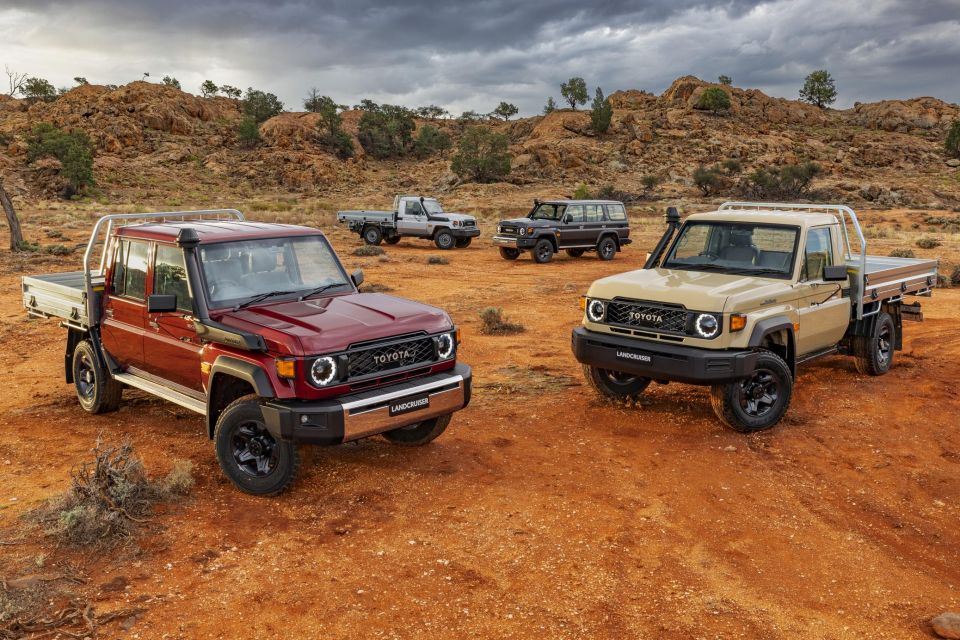
“We’ll evaluate that over the next two to three years as we would with any lifecycle.
“I believe that the market will move more to auto and the manual will be a significantly smaller portion, but this is a unique market. So again, it’s about choice in the end, consumers will decide.
“I think there’s a small market there but there’s a market.”
Mr Hanley said there’s been a lot of pent-up demand for the 70 Series, and predicted there could be an initial drop in sales once the V8 goes.
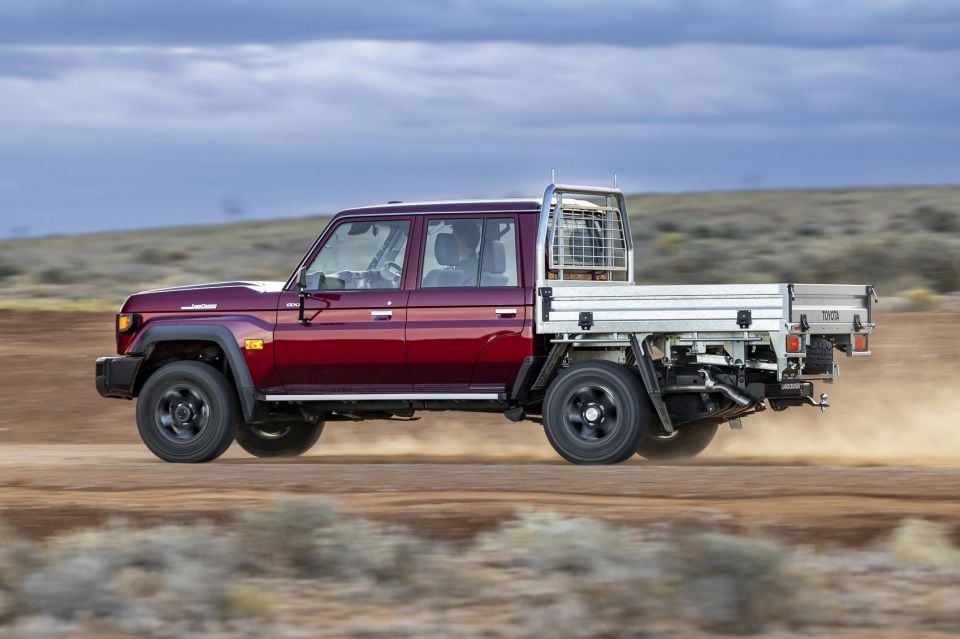
“There’s two aspects you’ve got to look at when you look at 70 Series,” he said.
“One is what is the natural demand and market correction of that car in the future and I think when it settles it’ll settle slightly lower than where it’s been the last couple of years but over time it’ll go back to its original kind of intent.
“That is, it’ll be a dominant player – high market share of the segment, not a lot of competitors, I get that, but it’ll be fine.
“However, you’ve also got to take into account that we’re pumping a lot of cars out there in the next 12 months.
“So there’ll be a correction but I suspect that it’ll play its role in our lineup and it’ll be continue to be strong over time.”
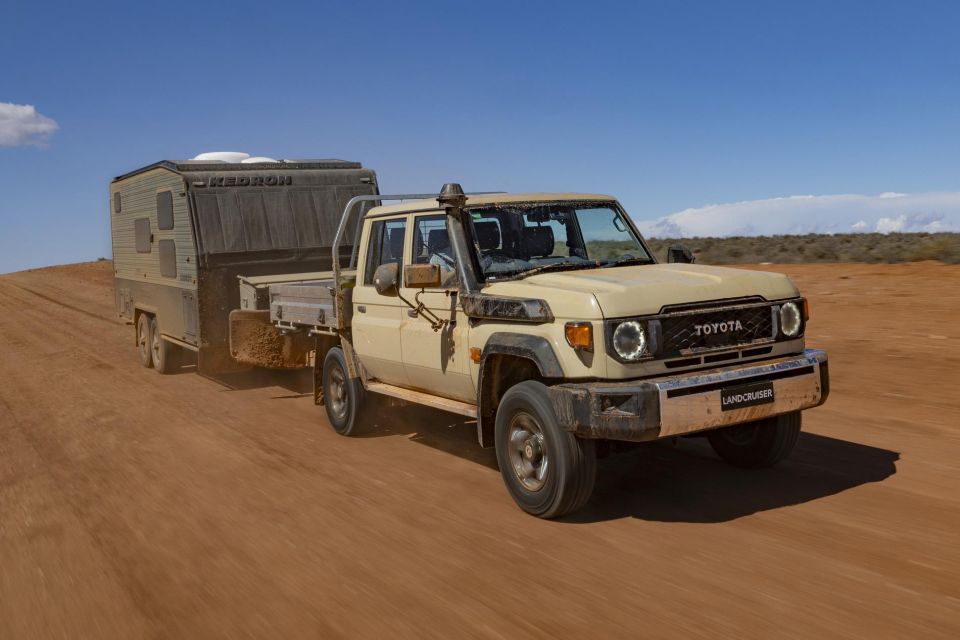
Since debuting in 2007, the V8 engine has powered more than 171,010 70 Series models in Australia.
For context, Toyota has sold 346,742 70 Series models in Australia since its 1985 introduction, which means over half of these pack a bent-eight under the bonnet.
While the 2.8-litre has half as many cylinders, it’s down just 1kW in power but packs 70Nm more torque than the V8, with outputs of 150kW and 500Nm when equipped with the six-speed auto.
Where expert car reviews meet expert car buying – CarExpert gives you trusted advice, personalised service and real savings on your next new car.
William Stopford is an automotive journalist based in Brisbane, Australia. William is a Business/Journalism graduate from the Queensland University of Technology who loves to travel, briefly lived in the US, and has a particular interest in the American car industry.


Shane O'Donoghue
6 Days Ago


Anthony Crawford
5 Days Ago


Matt Campbell
4 Days Ago


James Wong
3 Days Ago


Max Davies
1 Day Ago
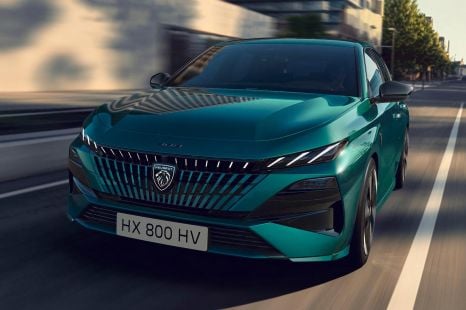

Derek Fung
6 Hours Ago